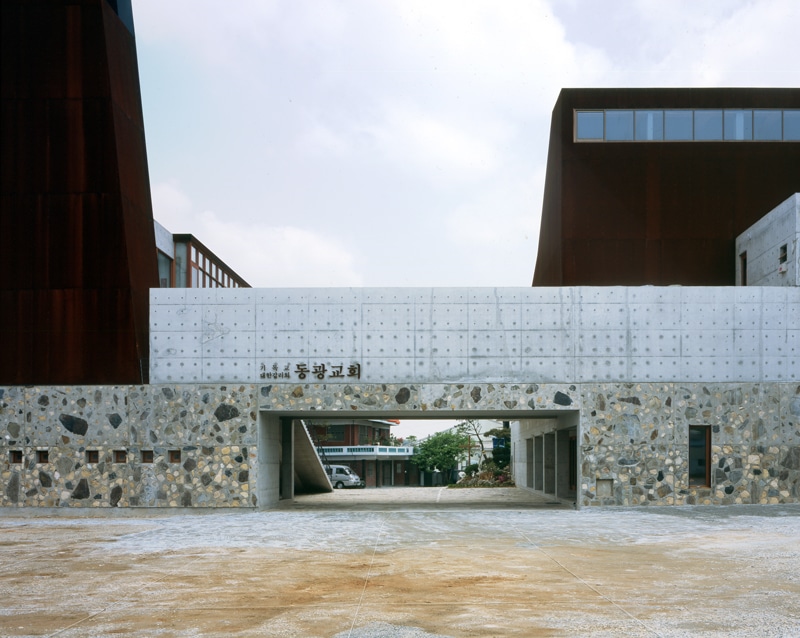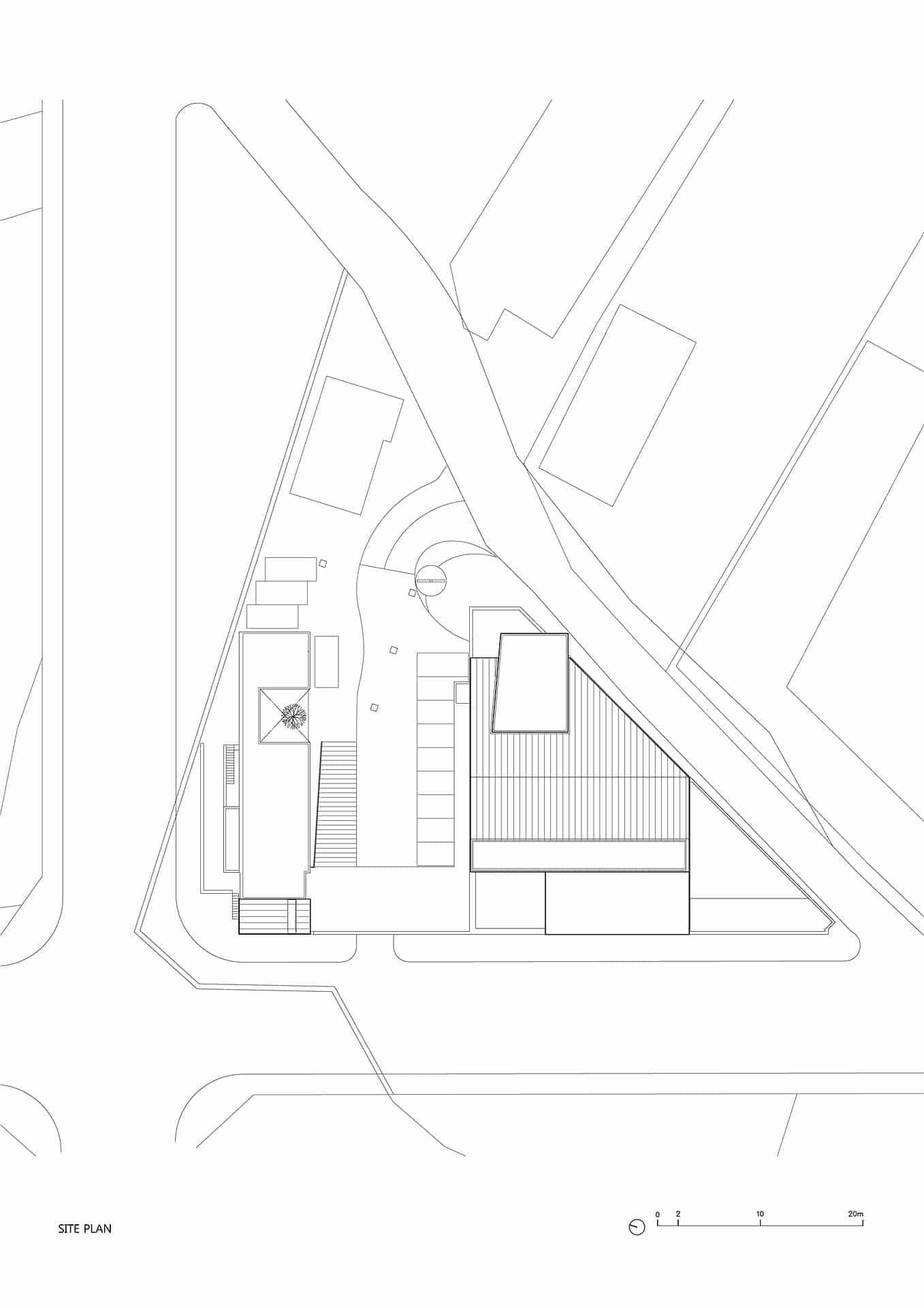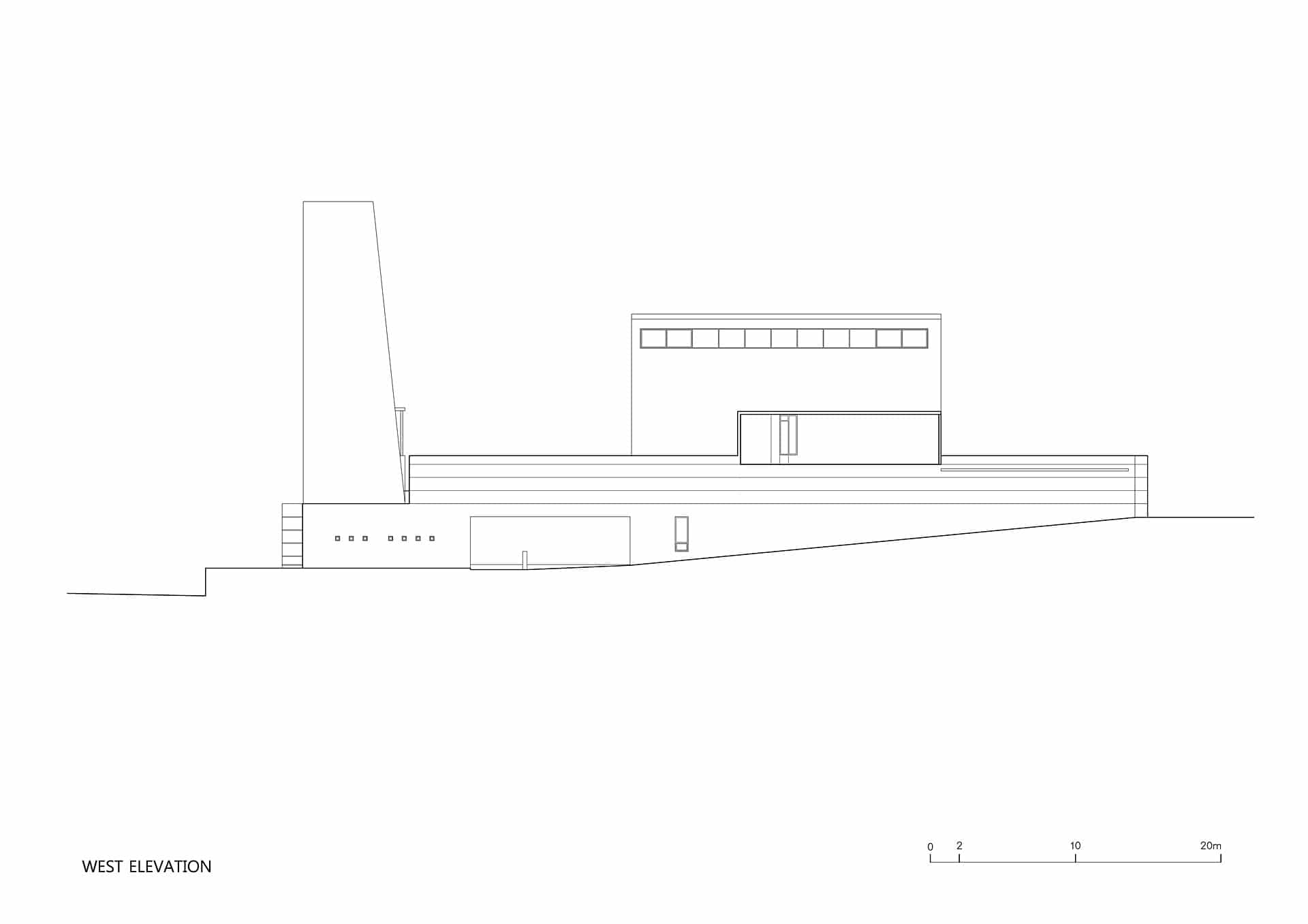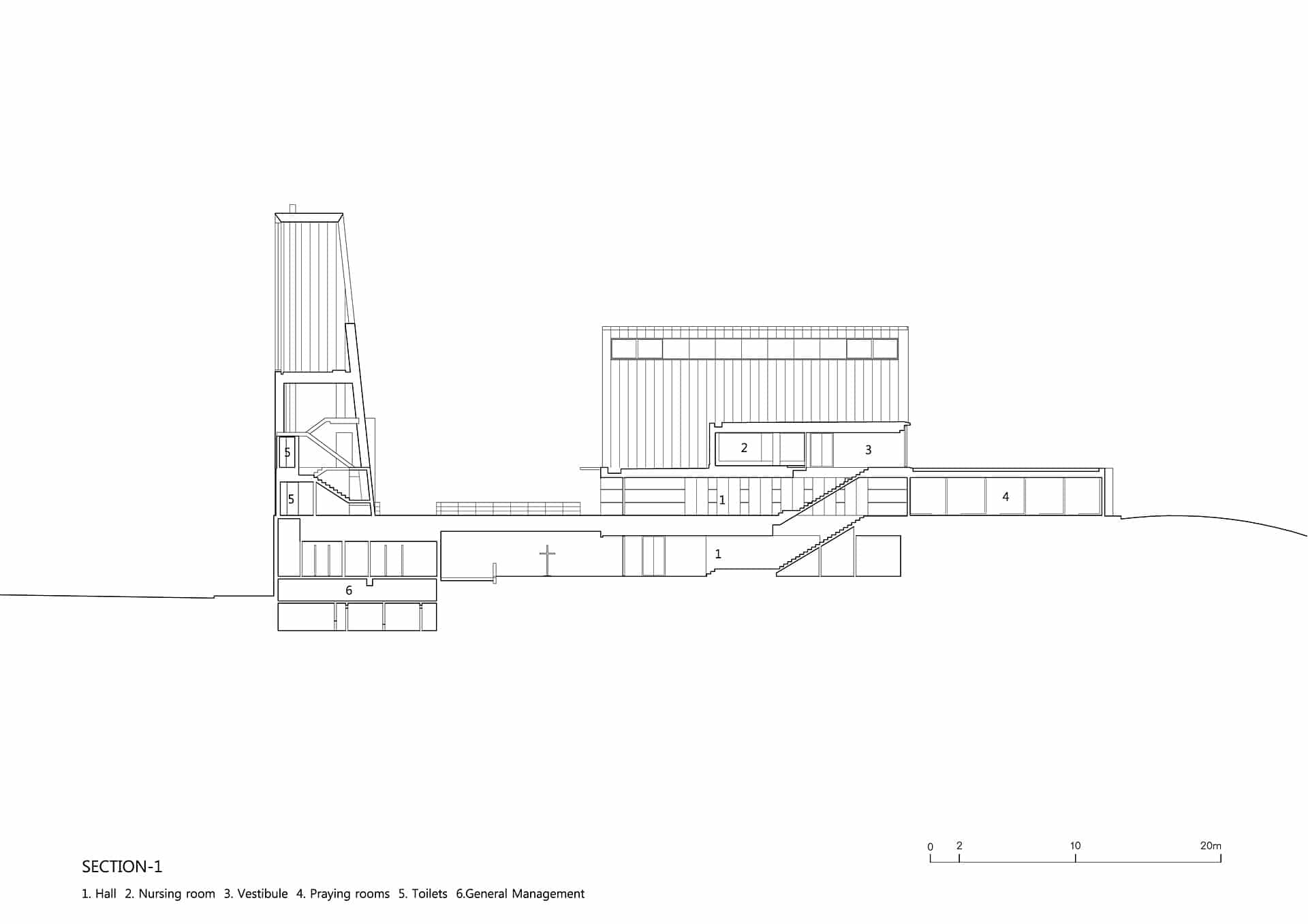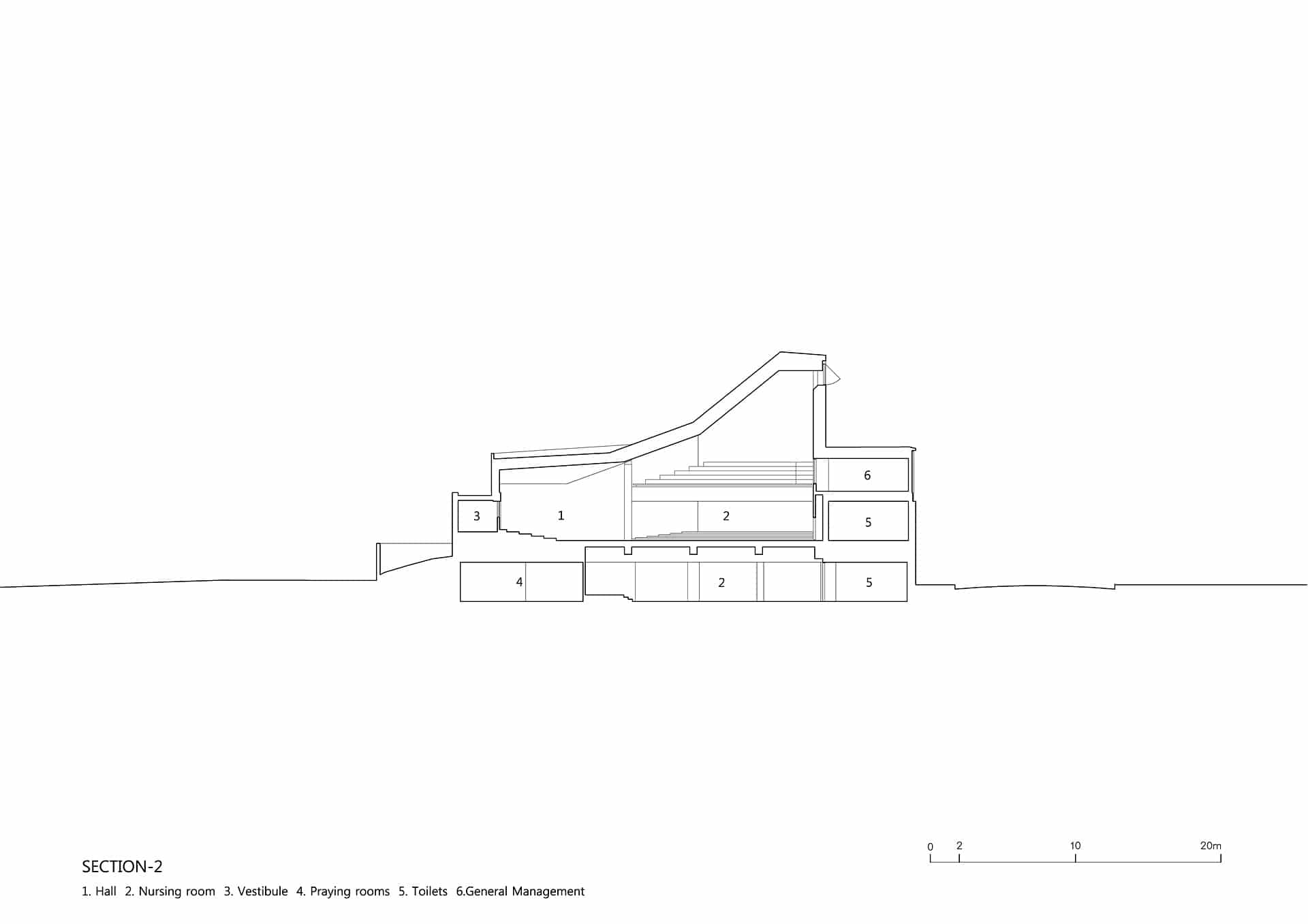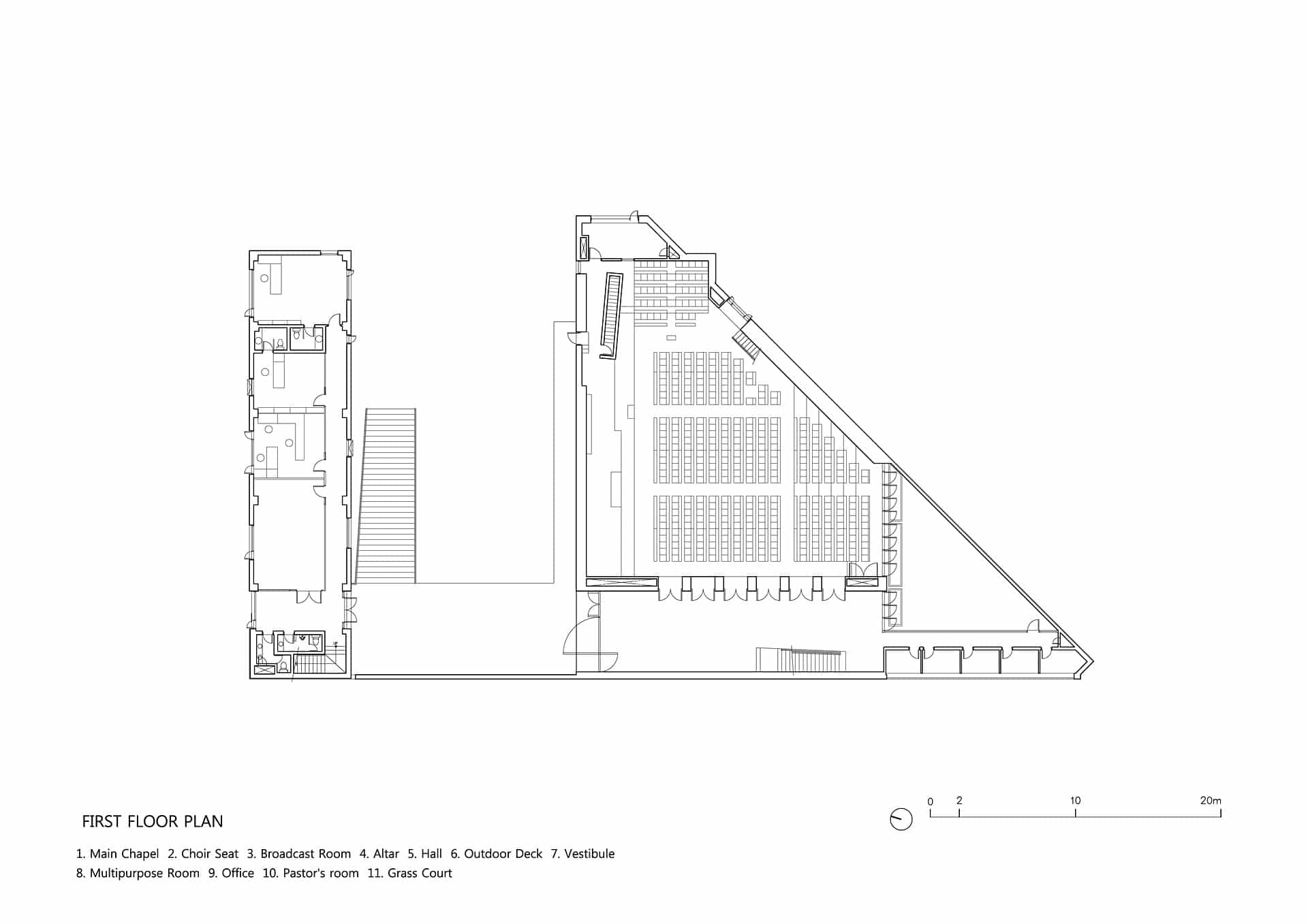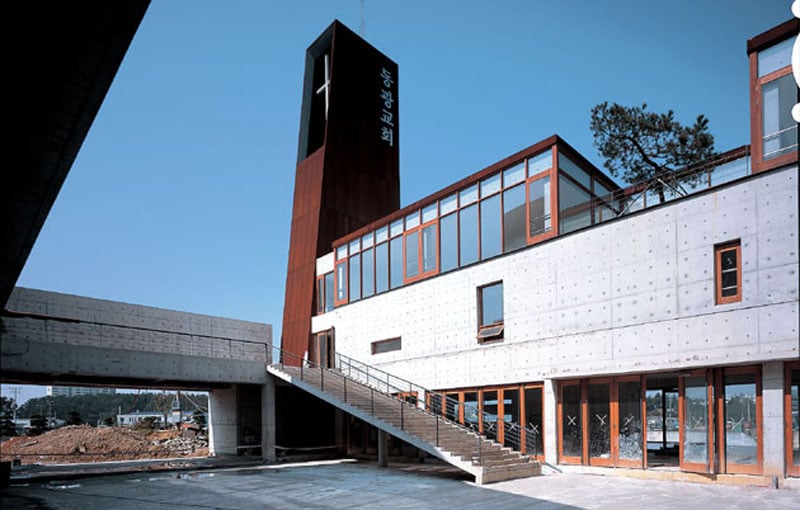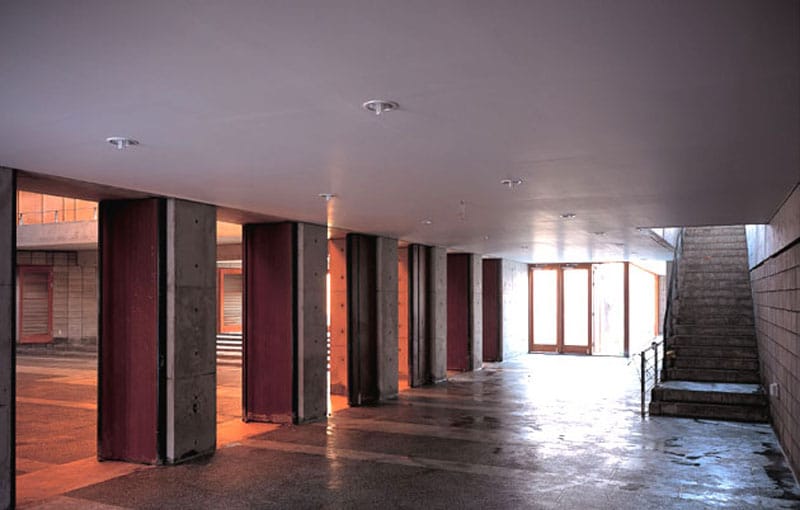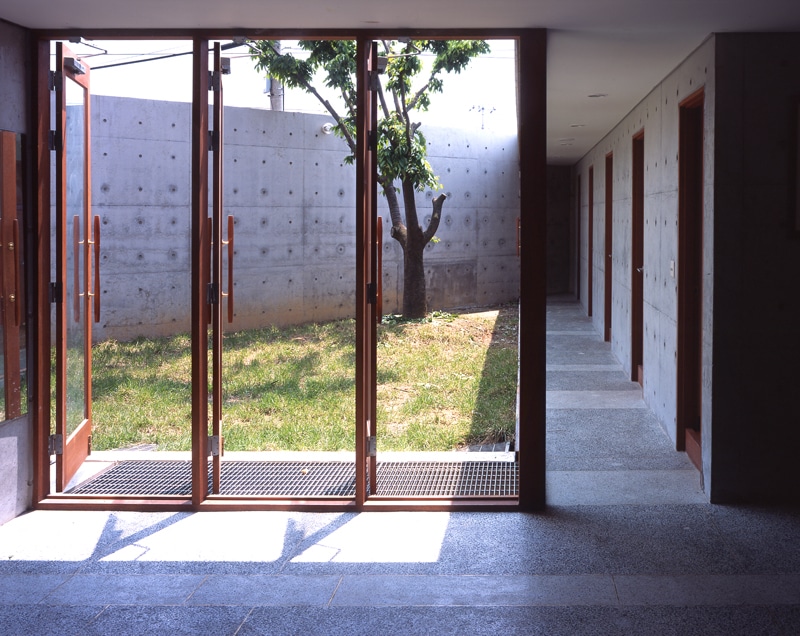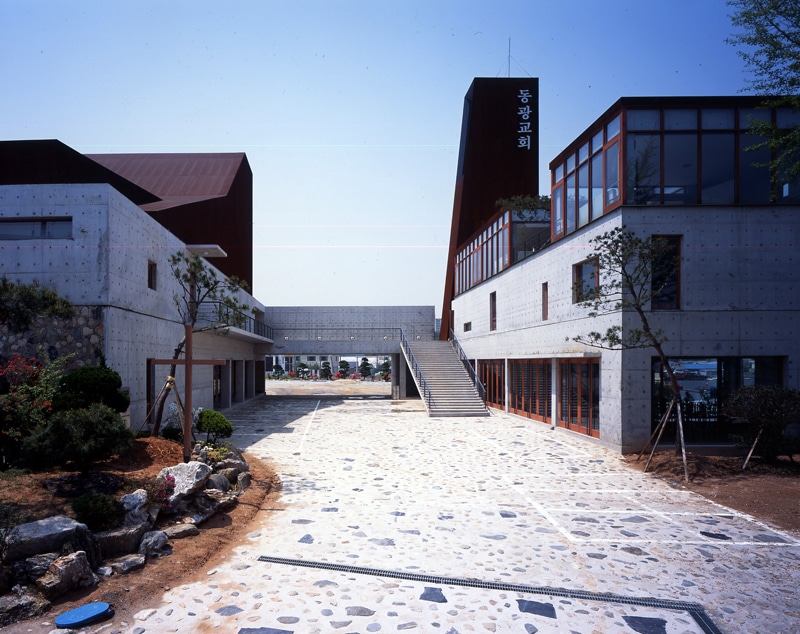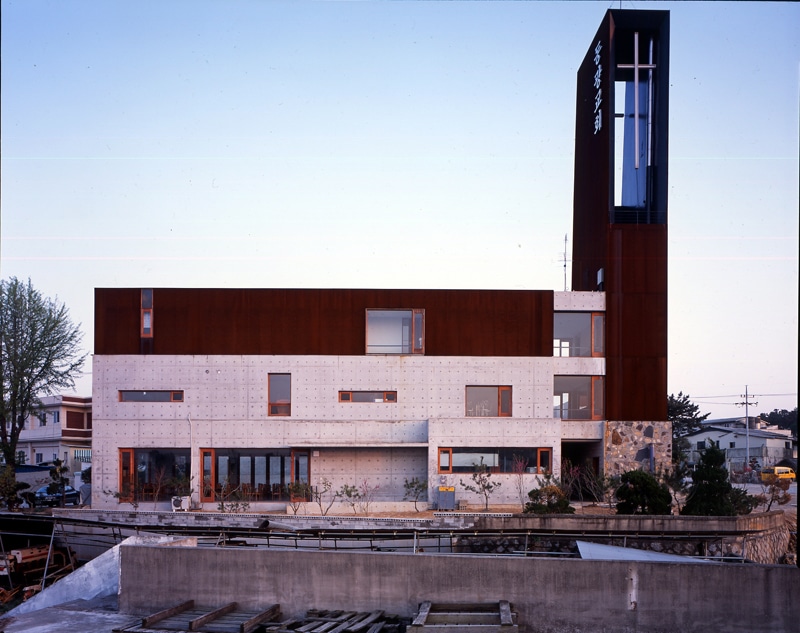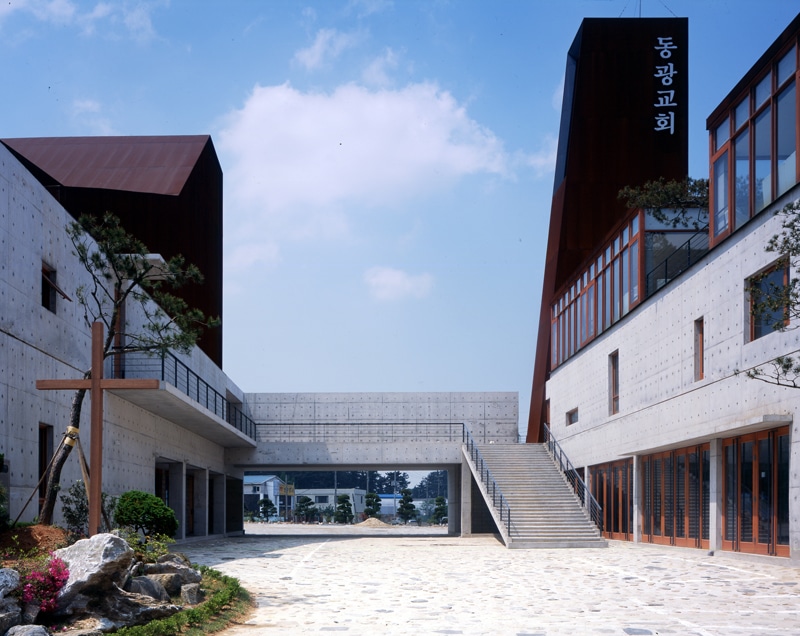Dongkwang Methodist Church
| 완공년도 | 2003 |
| 위치 | 전라북도 익산 |
| 대지면적 | 1,760.67㎡ |
| 건축면적 | 936.60㎡ |
| 연면적 | 1,956.78㎡ |
| 완공년도 | 2003 |
| 위치 | 전라북도 익산 |
| 대지면적 | 1,760.67㎡ |
| 건축면적 | 936.60㎡ |
| 연면적 | 1,956.78㎡ |
이 교회의 소재지인 익산益山은 그 역사가 마한시대로 거슬러 올라가는 古都이지만 그 흔적을 지금 도시 내에서 찾는 것은 무리이다. 한 때 裡里시로 이름이 되었던 이곳은 지난 77년 기차역 내의 화약을 실은 화차가 폭발하면서 도시가 거의 파괴되는 참사를 겪었다. 지금의 도시는 그 이후에 급조 하다시피 만들어진 풍경이어서 옛날 역사는커녕 예전의 모습도 잘 알아 볼 수 없다. 부지는 익산 역에서 동쪽으로 5,6km정도 떨어진 나지막한 분지 속에 있다. 주변은 영세한 공장들과 차고 등이 무작위로 난립해 있으나 대체적으로 느슨한 풍경을 이룬다. 이 교회부지를 끝에 두고 주변 전체가 아파트 단지로 재개발될 예정이라고 들었다. 실제로 격자의 가로망이 그어진 그림이 그 계획이라고 건네 받았으나 필시 이 그림은 부동산업자가 그냥 그린 것임이 틀림 없었다. 도무지 계획된 주거단지로 보이지 않았으나 이런 터무니 없는 그림이 실제화가 되는 게 우리네 현실이다. 이 무도한 그림을 놓고 그 틀 속에서 이 교회의 땅이 잘려 나가고 우리의 건축을 그 틀에 맞추어야 한다는 황당스러움이 못내 서글프다. 그리고 앞으로 이 주변의 느슨한 풍경이 사라지고 어이 없는 아파트가 들어서게 될 것이다. 비록 남루하고 조악한 건물들이 만드는 풍경이지만 이 풍경의 기억들을 새로 세우는 교회 건축 속에 담는 것이 중요하다고 느꼈다. 이 교회도 ‘사자의 길’에 언급된 종교건축에 대한 개념에서 그 뿌리를 찾는다. 비록 수 년 전에 가진 생각이지만 내가 생각하는 ‘종교적 건축’이 아직 바뀌지 않았다. 따라서 길이나 마당 같은 건축요소들이 경건함에, 혹은 그로부터 ‘자유함’을 얻기 위해 여전히 중요하게 쓰이고 있다. 다만, 종교건축 속의 공간을 성과 속으로 나누고 그 둘의 만남을 환상적으로 만드는 일이 기독교의 본질과 어긋난다고 하는 것을 충분히 인식하게 된 것이 다소 다르다. 따라서 그런 드라마틱한 공간의 연결을 위해 모든 요소를 중성화 시키는 것을 피하게 되었다. 이 교회는 어디까지나 지방 도시의 변두리 지역에 있는 크지 않은 교회라는 점에서 이 교회가 만드는 풍경에 더 많은 관심을 두게 된 것이 사실이다. 경사진 지붕의 본당 건물과 다소 경사진 면을 갖는 십자가 탑 등이 그러한 것들의 일부이다. 기본적으로 세 부분의 매스가 있게 된다. 본당부분과 십자가 탑, 그리고 목회관과 식당동인데 이 세 가지 매스가 적당한 간격을 두고 이 땅 위에 놓이게 된다. 하나는 육중하고 불규칙한 매스이며 다른 하나는 높은 타워의 매스이고, 또 다른 하나는 길다랗게 누워있는 매스이다. 이들은 마치 서로 대화를 하듯 놓여 있어 때로는 이 장소를 전혀 새로운 긴장 속으로 바꾸어 놓을 것이다. 이 세 가지 매스는 코르텐 강을 사용하였다. 멀리서 보면 마치 나지막한 지형 속에 놓인 거대한 조각 덩이처럼 보일 것이다. 여기서 새롭게 사용한 재료가 있다. 코르텐 강의 매스들을 위한 저층부분의 벽체를, 불규칙한 크기의 자연석을 콘크리트 형틀에 집어 넣고 콘크리트를 부어 부착시켜 세우게 하였다. 이 장소는 긴장된 도시가 아니라 아직도 느슨한 시골 같은 곳이라는 장소성이 노출 콘크리트의 중성적 성질에 대한 관습적 사용을 바꾸게 하였다. 일종의 과거에 대한 기억 장치일 수도 있다. 그래서 그 돌들도 되도록 이면 이 땅을 파헤치면서 나오는 돌들을 사용하게 하였으나 그 양이 그리 많지 않았다. 이 교회의 신도들은 스스로 여기서 사용되는 돌들을 날라 와서 이름을 새기고 그들의 성소를 짓는 성사에 직접 참여하는 의미를 만들고 있었다. 각기 다른 돌들이 콘크리트 속에서 이루는 풍경이 과거의 풍경을 연상시키기도 하겠지만, 이들이 가진 여러 믿음들을 그려낼 수도 있을 거라고 여긴다.
IkSan City, the region in which this church was to be built, originates from an ancient city almost 2000 years ago. Needless to say, like most cities in Korea, there are few traces to be found. Once named ‘YiLee’, the city had been the site of a massive explosion disaster when a train carrying explosive powder ignited in 1977. The current town had been hurriedly rebuilt after the tragedy, leaving no traces of the establishment before the disaster. The site sits in a low basin 5km away from the train station. The surrounding area is mostly factories and garages forming an industrial environment. The whole area will supposedly be rebuilt as an apartment house district, ending with the site for the church. A grid-like urban planning had no authority, and probably it was a sketch by a developer. Unfortunately, such is our sad reality that this totally absurd plan became reality. Based on this ridiculous plan, the site of the church had been chopped off by this and that way. Sad thing is our condition of architecture to fit a scheme into this absurdity.
The scheme for this church is also an extension of my conceptual framework, ’causeway of the dead’, which I have described in regards to the religious architecture. Although the concept is a few years old, I have not found any other to guide me through ‘religious architecture’. Consequently, architectural elements, such as path and MaDang, carry essential weight in conveying the devotion and the will of freedom. However, I realized that dividing sacred space from profane space and making a connection between them fantastically is far from the essence of Christian teaching. Therefore, I refrained from making every element neutral to accentuate the connection. In fact, my focus was more on how this mid-size church was going to affect the landscape of the suburb of a non-major city. The inclined roof of the church, and sloping tower are parts of this endeavor.
Basically there are three masses; the church, the tower, and a meeting space for the community. These are positioned with appropriate gaps in between. One is heavy and irregular another a high tower, and the last lying low on the ground. They seem to be engaged in a conversation, making the place halt in tension. All of these masses are built of corten steel. From afar, they seem like a huge sculpture in the lowland. I used a new material for this project.; corten steel. The lower portion of the wall for the corten steel above has been made by putting irregular natural stones into the concrete cast, secured by putting concrete. My habit of using the character of the exposed concrete had been changed to adapt to the fact the site is in a easygoing countryside, not a tensioned city. One might consider it to be an apparatus for remembering the past. For that reason, only the stones excavated from the site were to be used, but the quantity was not sufficient. The believers of the church had carried the stones from elsewhere and carved their name onto their stones before making them part of the church for participating the ceremony to build their own sanctum. The stones might be a memory of the past scenery to them, but I hope they would also be tokens of their belief.
